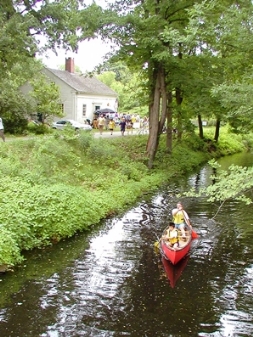To provide observations and information on the emerging fields of landscape scale conservation, heritage preservation, and sustainable community development.
Newsletter
Stay up-to-date with the latest nature, culture and community news.
We won’t spam you or share your information. Newsletters are sent approximately 10 times a year. Unsubscribe at any time.

Letter from Woodstock: Urban Parks Agenda for Everyone
Since at least the 1930s, the National Park Service has enjoyed a significant presence in urban areas. Yet, as the agency’s 2016 centennial approaches, the history of park service programs in cities can, at best, be viewed as a mixed legacy, with many stops and starts along the way. What can we learn from the past and what might the future hold for the newly announced NPS Urban Agenda?

Blackstone River Valley: Policy Without Money is just Talk
The Blackstone River Valley in Massachusetts and Rhode Island has long been a hotbed of innovation from its earliest industrialization to experimentation in protected area management with the creation of a National Heritage Corridor in 1986. Recently, the conservation possibilities of the region have been re-imagined yet again. In 2014, Congress authorized a new park unit – the Blackstone River Valley National Historical Park. How might this latest change affect the ongoing story of the heritage corridor with more than three decades of working on the ground in communities throughout the valley?
The Future of Administrative Histories
One way to learn the stories behind the creation and subsequent management of National Park units, regions, and programs across the country is through reading their administrative histories. For decades, NPS has supported the research and writing of these valuable documents, but how are they actually used (if at all?) by both park staff and other interested individuals and groups?

Letter from Woodstock: Urban Parks Agenda for Everyone
Since at least the 1930s, the National Park Service has enjoyed a significant presence in urban areas. Yet, as the agency’s 2016 centennial approaches, the history of park service programs in cities can, at best, be viewed as a mixed legacy, with many stops and starts along the way. What can we learn from the past and what might the future hold for the newly announced NPS Urban Agenda?

Blackstone River Valley: Policy Without Money is just Talk
The Blackstone River Valley in Massachusetts and Rhode Island has long been a hotbed of innovation from its earliest industrialization to experimentation in protected area management with the creation of a National Heritage Corridor in 1986. Recently, the conservation possibilities of the region have been re-imagined yet again. In 2014, Congress authorized a new park unit – the Blackstone River Valley National Historical Park. How might this latest change affect the ongoing story of the heritage corridor with more than three decades of working on the ground in communities throughout the valley?
The Future of Administrative Histories
One way to learn the stories behind the creation and subsequent management of National Park units, regions, and programs across the country is through reading their administrative histories. For decades, NPS has supported the research and writing of these valuable documents, but how are they actually used (if at all?) by both park staff and other interested individuals and groups?


